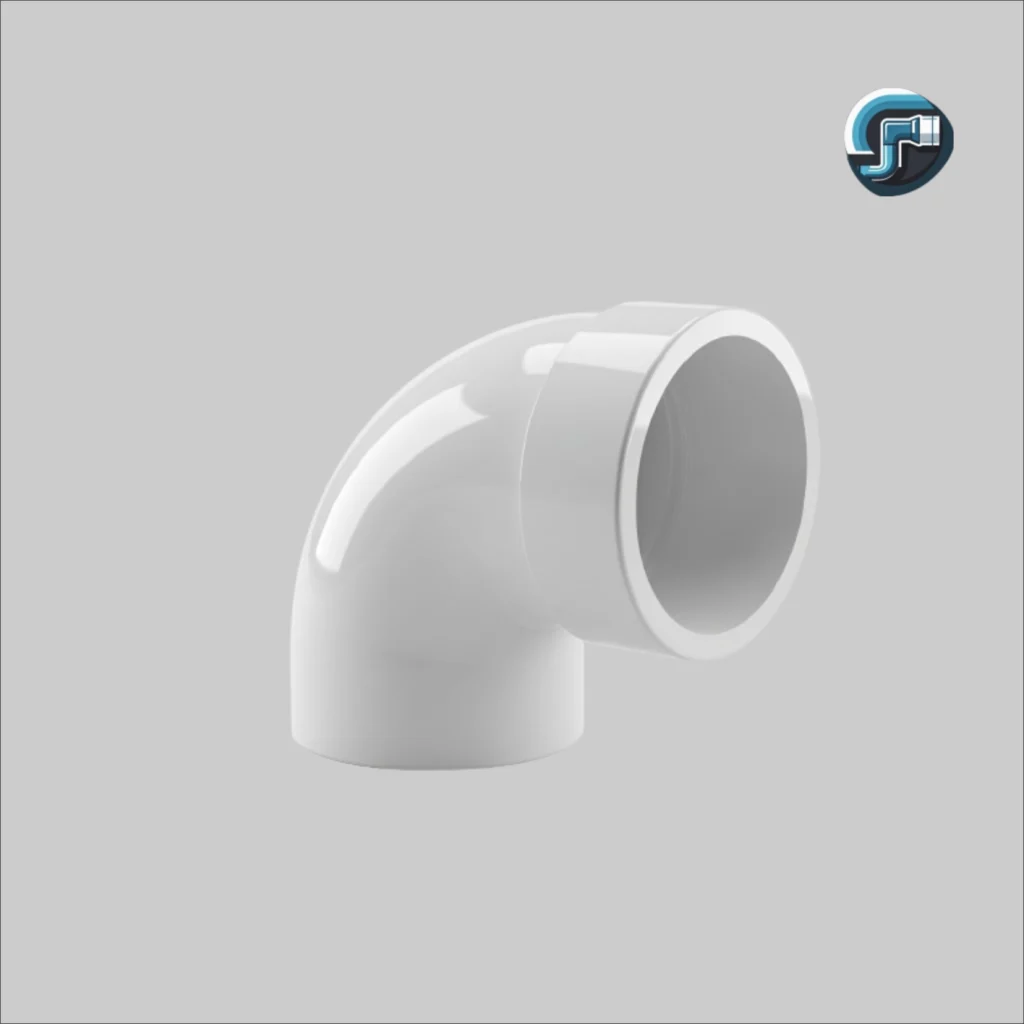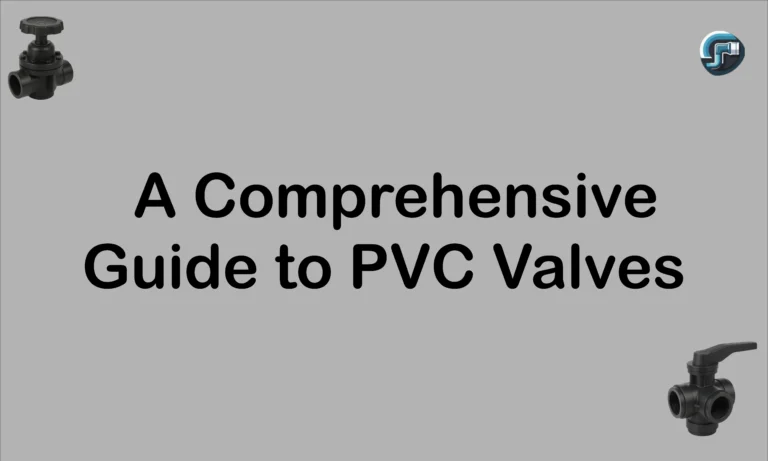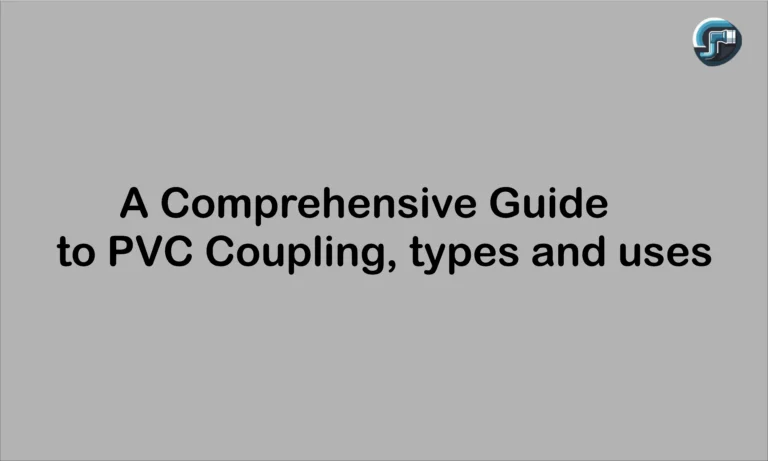A Comprehensive Guide to PVC Plumbing Elbows
Plumbing systems are the hidden networks that keep our homes and buildings running. There are a lot of fittings at the heart of these systems that connect pipes and control the flow of water and waste. PVC plumbing elbows are one of the most important parts of this group. These basic but important parts let you change the direction of pipes in a plumbing layout, which lets you make complicated pipe runs. Anyone who works in plumbing or construction needs to know about the different kinds, sizes, and uses of PVC elbow pipes.
This guide provides extensive information regarding PVC plumbing elbows, whether it is a standard 90-degree bend or threaded for some specific purposes. Size-wise, we will be covering the 1 1/2 PVC elbows, the 2 PVC elbows, choosing the right PVC elbow joint for your application as well as how to install it perfectly. If you’re going to build a new drainage system or fix an existing one, knowing how to use PVC pipe and elbows is what you should have in store.

What is a Plumbing Elbows PVC?
An elbow made of polyethylene pipes is a type of pipe that deviates in a certain direction. Generally, it is made of polyvinyl chloride (PVC). These fittings, in fact, have both pressure and non-pressure applications such as potable water supply, irrigation, and drain-waste-vent (DWV) systems. The bending angle makes it an elbow joint. 45 and 90 degrees have usually been used.
Everybody knows that PVC is cheap, strong, doesn’t rust, or react with chemicals. The best material for all plumbing works in homes, businesses, and factories is PVC. PVC elbow pipe fittings are those that join two pieces of pipe to form a strong and leak-proof joint at the elbow. With the elbow PVC pipe, a plumber can go around everything, run the pipe along walls, and make all the complicated layouts that modern plumbing requires.
Common Types of PVC Elbows
While the concept is simple, PVC pipe parts and elbows come in several variations designed for specific purposes. The angle of the bend and the type of connection are the two main factors that differentiate them. Below you can see the PVC pipe fittings names and images.
PVC Elbow 90 Degree
The very common fitting among all is the PVC elbow 90 degrees. By its name, the Elbow Pipe PVC makes a bend of a sharp right angle in the pipe. This elbow is, to be specific, an angle of 90 degrees for routing pipes on corners, bending up walls, or for converting from a horizontal to vertical run.
There are two main styles of the 90 degree elbow PVC that is, short radius (or street) and long radius (or sweep). A long radius elbow has a gradual bend, thereby minimizing friction and allowing flow to be smoother. Typically, this is the case with a high state of importance and has to do with solids passing through without creating a bind, which is specifically DWV systems. Short-radiused elbows are much shorter and often used where space is at a premium, but generally, they increase agitation in pressure systems. A standard PVC duo elbow for drainage will almost always be a long sweep version to maintain proper flow.
It provides a sharp right-angle turn in the pipe run. The elbow 90 degrees is necessary for routing pipes on corners, up walls, or transitioning from a horizontal to a vertical run. It is the PVC elbow 90 degrees that most commonly fits into the pipe.
There are two main types of 90-degree elbow PVC: short radius or street, and long radius or sweep. The reduced degree elbow gives a sharp bend and thus produces friction and provides a smoother flow. This is always of much concern, primarily with DWV systems, where solids have to pass through without forming a clog. Short-radius elbows, on the other hand, are very short but are used mostly where space is a challenge. A standard PVC 2 elbow for drainage will almost always be a long sweep version to maintain proper flow.

PVC Elbow 45 Degree

It is a 45-degree angle elbow that gives a gentle change in direction. Pairs of these fittings are used for custom offsets around obstructions or to create a gentle rise or drop over a longer distance. Usually, two elbows at 45 degrees make for a much smoother, unrestricted flow path compared to one 90-degree angle elbow, thereby minimizing pressure drop along supply lines and reducing the chances of blockage in drain lines. As such, these plumbing PVC elbows are a tool that every plumber must have, as they allow for flexibility when dealing with complicated arrangements.
3 Way PVC Elbow
A less common but highly useful fitting is the 3 way PVC elbow, also known as a side outlet elbow or corner fitting. This fitting has three connection points. It functions like a standard 90-degree elbow but includes an additional outlet at a 90-degree angle to the main bend. This allows for three pipes to meet at a single point, forming a corner. The 3 way PVC elbow is popular in non-plumbing applications like building frameworks for furniture, shelving, or greenhouse structures, but it also has uses in complex irrigation and drainage manifolds.
PVC Elbow Size Chart
| Nominal Pipe Size (NPS) | Outside Diameter (OD) | Common Elbow Types (90° / 45°) |
| 1/2 inch | 0.840 in (21.34 mm) | 90°, 45° |
| 3/4 inch | 1.050 in (26.67 mm) | 90°, 45° |
| 1 inch | 1.315 in (33.40 mm) | 90°, 45° |
| 1 1/4 inch | 1.660 in (42.16 mm) | 90°, 45° |
| 1 1/2 inch | 1.900 in (48.26 mm) | 90°, 45° |
| 2 inch | 2.375 in (60.33 mm) | 90°, 45° |
| 2 1/2 inch | 2.875 in (73.03 mm) | 90°, 45° |
| 3 inch | 3.500 in (88.90 mm) | 90°, 45° |
| 4 inch | 4.500 in (114.30 mm) | 90°, 45° |
| 5 inch | 5.563 in (141.30 mm) | 90°, 45° |
| 6 inch | 6.625 in (168.28 mm) | 90°, 45° |
| 8 inch | 8.625 in (219.08 mm) | 90°, 45° |
| 10 inch | 10.750 in (273.05 mm) | 90°, 45° |
| 12 inch | 12.750 in (323.85 mm) | 90°, 45° |
Connection Types: Slip vs. Threaded
Beyond the angle, the method of connection is a critical differentiator for PVC elbows. The two primary types are slip (also called socket) and threaded.
Slip (Socket) Elbows
Slip elbows are the most typical use among end customers as well as in commercial plumbing. They have smooth openings resembling sockets at which a PVC pipe can be pushed into the fitting. The joint is then permanently closed by a two-step preparation of the connector and the blending of the pipe with the proper cement-hardened PVC joint. The structure cleans and softens both surfaces of the pipe and the fitting and then chemically welds it to form such a joint, but it is watertight.
Slip fittings can be connected without difficulty and speed, making it ideal for such projects efficiently. These are generally applicable, whether it is the water supply line or DWV systems. If you purchase a standard 2 in PVC Elbow or a 3 4 PVC Elbow, it most likely carries a slip-type fitting inside it.
PVC Elbow Threaded
A PVC Elbow threaded fitting has screw-like threads on one or more of its openings. These threads can be either male (on the outside) or female (on the inside). A threaded PVC elbow allows for connections to be assembled and disassembled without cutting the pipe. This is advantageous at strategic places in a system that might demand maintenance, like joining with pumps, valves, or fixtures.
Threaded connections are sealed with thread seal tape (Teflon tape) or a pipe joint compound to prevent any leakage. PVC Elbow with Thread is essential to ensure that the fitting is not over-tightened since such an act might cause irreversible damage to the elbow joint, which is embarrassingly fragile in nature. These fittings are the mainstay in situations where PVC Threaded Elbow needs to connect with metal pipes or any other threaded component. A pipe is termed a combo elbow if the fitting is threaded on one side and slips on the other, thus allowing for the transition between connection types.
Understanding PVC Elbow Sizes
PVC Elbows are available in a vast range of sizes to match standard PVC pipe diameters. The size corresponds to the nominal pipe size it is designed to fit. For example, a 2 PVC elbow is made to connect two pieces of 2-inch nominal size PVC pipe.
Here are some of the most common sizes and their typical applications:
1/2 PVC Elbow: A very common size, the elbow PVC 1 2 is frequently used in residential water supply lines, particularly for branching off to individual fixtures like sinks and toilets. It’s also popular for small-scale irrigation systems. You might see it labeled as a 1 2 PVC elbow.
3/4 PVC Elbow: The 3 4 PVC Elbow is another staple for residential water supply, often used for main lines within a house or for outdoor hose bibs and sprinkler systems.
1 1/2 PVC Elbow: The 1 1 2 PVC Elbow is a standard size for residential drain lines, such as those for kitchen sinks and washing machines. It provides enough volume to handle the discharge from these appliances without issue.
2 PVC Elbow: Moving up in size, the 2 Elbow PVC is widely used for larger residential drain lines, including multiple fixtures connected to a single branch. A PVC 2 Elbow is a workhorse in DWV systems.
4 PVC Elbow: The 4 PVC Elbow is primarily used for main sewer lines and soil stacks in residential and commercial buildings. A PVC 4 Elbow must be a long-sweep type to ensure waste flows freely toward the municipal sewer or septic system.
When selecting an elbow, it’s crucial to match the fitting size to the pipe size. An incorrectly sized fitting will not create a proper seal and will lead to leaks or system failure.
Applications in Plumbing Systems
The primary purpose of PVC Pipe and Elbows is to create the necessary pathways for water and waste. Their applications are diverse and depend on the specific plumbing subsystem.
Drain-Waste-Vent (DWV) Systems
In DWV systems, elbows are used to route drain pipes from fixtures (sinks, toilets, showers) to the main sewer line. The choice of elbow is critical here. As mentioned, long-sweep 90-degree elbow are standard for transitioning from horizontal to vertical runs to prevent solids from getting stuck. A sharp 90 degree elbow PVC should never be used on its side in a horizontal drainage line, as it can easily cause a blockage. Instead, two 45-degree elbows are used to create a smoother, more gradual turn.
Water Supply Systems
For pressurized water supply lines, the concern is less about clogs and more about maintaining water pressure. Every turn in a pipe creates friction, which leads to a drop in pressure. While a PVC elbow 90 degree fitting is perfectly acceptable, using 45-degree elbows for offsets can help minimize this pressure loss over the entire system. Both threaded and slip elbows are used, with PVC elbow threaded fittings often found at connections to water heaters, pressure tanks, and spigots.
Irrigation and Outdoor Use
PVC is an excellent material for outdoor and underground use, making it ideal for irrigation systems. A combination of PVC plumbing elbows of all types and sizes is used to create complex sprinkler layouts. The 3 way PVC elbow can be particularly useful for creating manifolds that distribute water to different zones. Since these systems are often modified or repaired, PVC threaded elbow fittings can be advantageous for connecting sprinkler heads or valves.
Electrical Use
Being lightweight, strong and resistant to corrosion, PVC Pipe Fittings Electrical are being used for electrical applications by producing a good barrier for wiring used in residential, commercial and industrial applications. PVC tubes, due to their excellent insulating properties, protect cables against moisture, chemical attack, and damage from the environment while minimizing risks of shock or short circuiting. Effective in guiding wires through walls, ceilings, and underground paths safely, neat, and generally ensuring their longevity, PVC electrical fittings include elbows, couplings, and junctions.
How to Install a PVC Elbow Joint
Creating a secure PVC pipe elbow joint is a straightforward process, but it requires attention to detail. The following steps apply to slip-style (solvent weld) elbows.
Tools and Materials:
- PVC pipe cutter or saw
- Deburring tool or utility knife
- Tape measure
- Permanent marker
- PVC primer (usually purple)
- PVC cement (heavy, medium, or all-purpose depending on pipe size and application)
- Clean cloth
Step-by-Step Installation:
Cut the Pipe: Measure and mark the PVC pipe plastic to the desired length. Use a PVC pipe cutter for a clean, square cut. A handsaw or miter saw can also be used, but ensuring the cut is perfectly straight is essential for a good seal.
Deburr the Pipe: After cutting, the inside and outside edges of the pipe will be rough. Use a deburring tool or a utility knife to remove any burrs or shavings. A smooth surface is crucial for a proper fit and to prevent material from catching inside the pipe.
Dry Fit: Before applying any primer or cement, perform a dry fit. Push the pipe into the PVC elbow to ensure it fits snugly. The pipe should go about one-third to two-thirds of the way into the socket by hand. Use a marker to draw an alignment line on the pipe and fitting if the final orientation is critical.
Apply Primer: Using the dauber attached to the can lid, apply a liberal coat of PVC primer to the outside of the pipe end and the inside of the elbow socket. The primer cleans the surfaces and begins the chemical process that softens the PVC. Work quickly, as the primer evaporates fast.
Apply Cement: Immediately after priming, apply an even coat of PVC cement to the same two surfaces—the outside of the pipe and the inside of the socket. Apply a slightly thicker coat to the pipe than to the fitting. Avoid clumps and ensure full coverage.
Join the Pieces: While the cement is still wet, push the pipe firmly into the elbow PVC fitting until it bottoms out in the socket. Give the pipe a quarter-turn as you push it in. This action helps to spread the cement evenly and ensures a strong weld.
Hold and Cure: Hold the pipe and fitting together for at least 30 seconds. The chemical reaction can sometimes push the pipe back out of the socket, so holding it firmly prevents this. After 30 seconds, the initial bond is formed. Wipe away any excess cement from the outside of the joint with a clean cloth.
Allow the joint to cure according to the manufacturer’s instructions on the cement can before pressurizing the system. Cure times vary based on temperature, humidity, and pipe size.
Conclusion: The Backbone of Versatile Plumbing
Humble as it is, the PVC Elbow acts as an important turn in the road into actualizing simple solutions for very complex systems. The sharp turn of the PVC elbow, 90 degrees, the graceful bend of a 45-degree fitting have indeed shaped and functioned into every plumbing network. Slip type is for permanent connections; elbow with thread is for serviceable points; thus, adding another layer of versatility.
Understanding the different types, sizes, and installation techniques of PVC plumbing elbows would go a long way for a professional in developing safe, energy-efficient, and durable processing systems. It applies from the small 1 2 PVC Elbow for a household faucet to the 4 PVC Elbow destined for the commercial sewer main: the right part for the job, prep the materials well, and put together a solid, leak-proof joint. In this way, the skillful use of these simple but important components forms one of the pillars of good plumbing and building practices.







